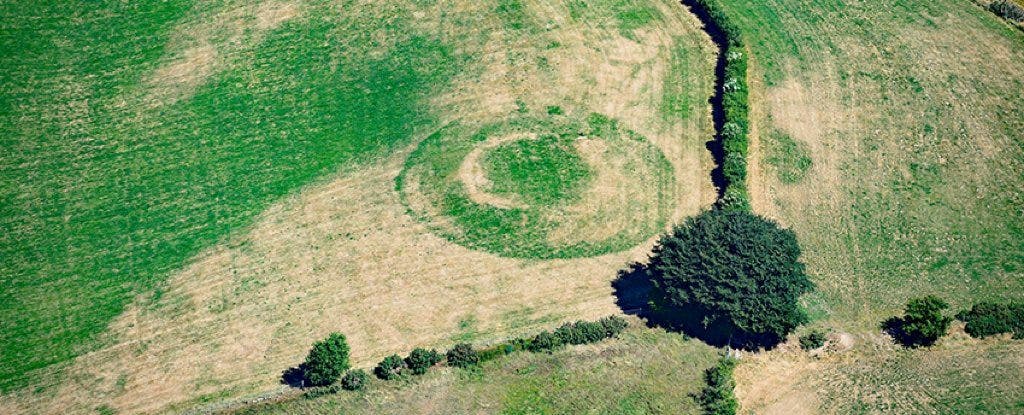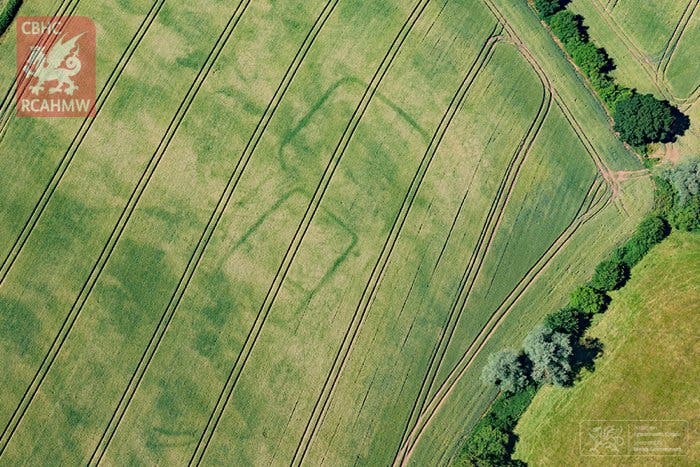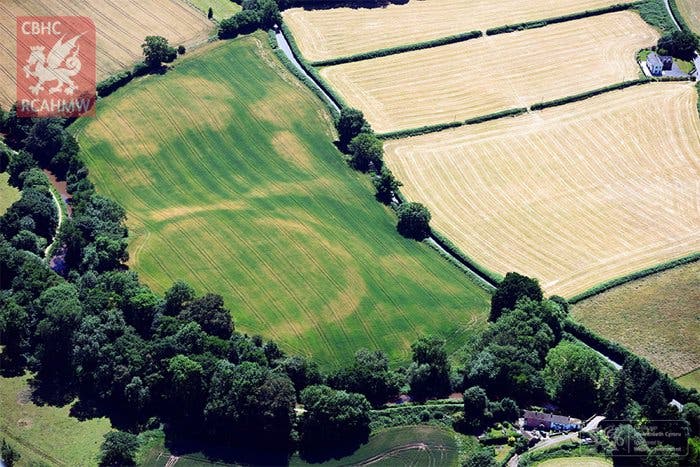While most people in Britain struggle to deal with the summer heat, aerial archaeologists are loving it: the hot weather is revealing archaeological features which are usually hidden.

It’s not usually this hot in the UK. While no records were really broken, overall temperatures were unusually high, often with serious consequences for ecosystems. But the heat had another unexpected consequence: it is revealing archaeological features.
“I’ve not seen conditions like this since I took over the archaeological flying at the Royal Commission in 1997,” aerial investigator Toby Driver from the Royal Commission on the Ancient and Historical Monuments of Wales (RCAHMW) told Wales Online.
“So much new archaeology is showing it is incredible.”
Britain is riddled with archaeological features. Continuously inhabited since pre-Roman times, the country can boast a trove of archaeological remains, which are now being brought to light without any digging. The remains of former castles, forts, farms, mansions, and more are becoming visible — some of them dating back to the Iron Age, while others, like WWII air shelters, are much more recent structures.

Many of these were previously known to researchers but some are entirely unknown.
The reason these structures are popping up has a lot to do with water in the soils. The difference is that archaeological soil (soil that contains archaeological remains) often has different physical characteristics than its surrounding areas. For instance, it can be more compact or contain iron particles, which make it a bit harder for plants to survive.
A similar thing can happen if the soil is rocky — due to foundations or walls being buried under it, for example. Under heat stress, plants above these areas are more likely to wither away. Conversely, ancient ditches or moats that later get filled in with fresher soil can make it easier for plants to survive. Either way, archaeological features often cause a contrast i soil properties which can have visible effects on vegetation.

This kind of event is not exactly rare, but it’s not very common either. If archaeologists want to make the most out of this opportunity, time is of the essence: the window might close soon, and there’s a good chance that the marks will only remain visible for a week or two (depending on the weather conditions).
What will likely happen after these new features have been noted down is a geophysical survey — a non-invasive measurement of the subsurface properties which produce an even clearer evidence of buried archaeological structures. After that, archaeologists may decide to start digging and bring them to light.






